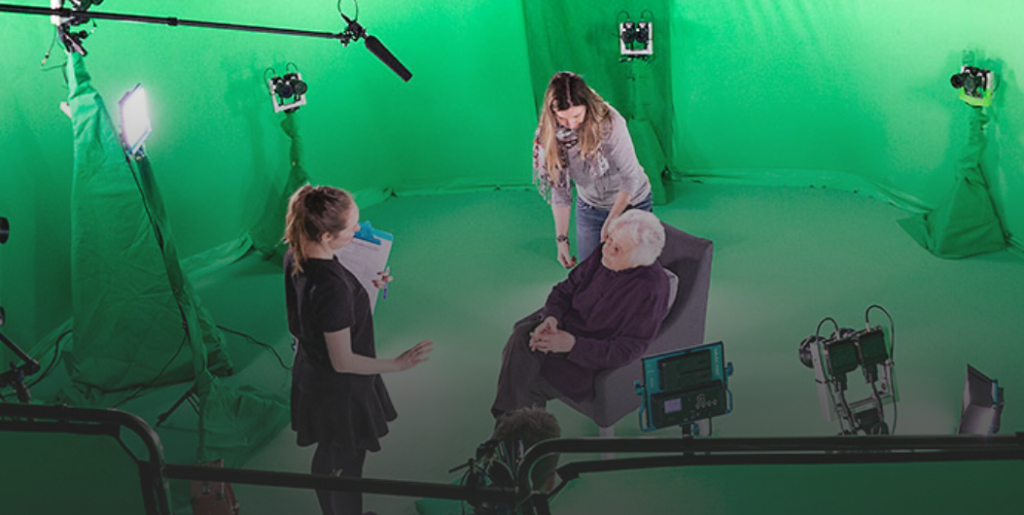
Never again.
It’s the vow from Holocaust survivors not to allow the world to forget their past, lest genocide be repeated in the future.
Today, an innovative, high-tech method of delivering that message to the current generation holds promise for distance education opportunities on the horizon.
The USC Shoah Foundation, a Holocaust history organization founded in 1994 by director Steven Spielberg at the University of Southern California, is taking the practice of recording the oral histories of survivors to an entirely different level. It has created 3-D interactive holograms of survivors who not only recount their chilling experiences in Nazi concentration camps and ghettos during World War II; they can respond to a viewer’s questions in real time.
Forever.
Called Dimensions in Testimony, the program (which debuted in 2017) uses advanced filming techniques – green screen, dozens of cameras arranged in 360 degrees – to create a three-dimensional digital image of the subject. Over the course of several days, the survivor is interviewed about his or her story, and then answers more than 1,000 questions that would be anticipated from an audience (“What was life like before the war?” “Do you feel hope for the future?”).
Viewers receive more than a narrative. They can have a virtual conversation with a survivor who not only isn’t physically present but who is no longer alive.
Fewer than 100,000 Jews who were in camps, ghettos and in hiding under Nazi occupation are still alive today, according to the Conference on Jewish Material Claims Against Germany. The youngest are in their mid-70s. Time is running out.
Aaron Elster, one of 20 interviewees listed on Shoah’s Dimensions in Testimony website, died in 2018 at age 85 after recording his testimony in 2015. Nevertheless, Elster has been immortalized in a medium that allows him to interact with individuals in ways that create personal connections that run deeper than what the printed word or traditional audiovisual presentations can provide.
The viewer can personalize the experience by taking the virtual discussion in almost any way he or she chooses. The only limitation is the inability to shake a survivor’s hand or give him or her a hug.
Shoah currently has made the Dimensions in Testimony available to seven other Holocaust museums in the United States, with more access on the way. Some of the interviews are conducted in languages other than English, such as German and Hebrew, opening them to wider audiences around the globe. And of course the technology can be expanded to any number of oral histories, such as survivors describing the nuclear bombings of Japan – and to other areas of education.
The COVID-19 pandemic has exposed scores of students to distance learning for the first time, and with wildly uneven results. Many school districts were forced to migrate lessons to rudimentary online platforms on impossibly short notice, causing endless frustration and dissatisfaction from students, teachers and parents. Most agree that group instruction on Zoom is insufficient. Florida Virtual School, which way back in 1997 became the nation’s first statewide K-12 virtual public school, has more experience – and a proven track record — in providing a more robust distance learning environment.
Dimensions in Testimony takes the concept to a different level. It’s like something from a Ray Bradbury story, only it’s science fact, not fiction.
It’s superior to videoconferencing because it’s not dependent on time. Holographic lessons can occur whenever they’re convenient while still remaining interactive. And they are customizable – they are as flexible as the artificial intelligence can take them. As the Shoah Foundation states, they enable students “to be agents in their own learning.”
Obviously, 3-D holograms aren’t an immediate solution to how to improve remote learning when (if?) schools re-open this fall. Still, the technology is beyond the concept stage and already in limited use. (For reference, the fictional communicators of “Star Trek” in the late 1960s were realized as actual flip phones a mere 30 years later.)
For Dimensions in Testimony, a project created to keep the past alive, the future is now, paving the way for other education innovators to follow.


